Millions of lower-income Americans have been unable to take advantage of solar, but they need the benefits of clean energy now more than ever. Lower-income households spend an average of 8.2 percent of their income on energy bills — about three times more than moderate- to high-income households. Black and brown people are disproportionately exposed to environmental hazards and suffer the associated health consequences. Fortunately, nonprofits like HBCU Community Development Action Coalition through its Clean Energy Initiative and governmental agencies are funding solar projects aimed at helping those households that need it the most.
Why Solar Has Previously Been Inaccessible:
There are several reasons why solar has been unattainable for lower-income residents. Nearly half of U.S. households — totaling more than 154 million people — cannot host rooftop solar because they lack suitable space, rent their homes, or live in multi-tenant buildings. Millions more simply cannot afford to spend tens of thousands of dollars on the upfront costs for installation. As Marta Tomic of Vote Solar states, “Community solar really should have a diverse subscriber pool with each project. If we have this goal of empowering customers, of being able to provide them savings on their electricity bill, we need to close that gap [in participation].”
The Benefits of Community Solar:
Community or shared solar is a project model where multiple participants own or lease shares in a mid-sized solar facility and receive credits that lower their monthly utility bills based on how much power the facility delivers to the grid. Unfortunately, less than half of U.S. community solar projects have participation from low-income households. States and industry experts are now working to change that. A dozen states and the District of Columbia have created various mandates, financial incentives, and pilot programs to make it easier for low-income participants to access shared solar. It not only lowers energy bills for those that need it the most but also provides cleaner alternatives in communities that are often exposed to higher pollution levels. Another benefit is that community solar projects can be located on industrially contaminated lands that cannot readily accommodate other uses and are too often found in under-resourced communities. And finally, when community solar is paired with battery storage at critical facilities, it can prevent power loss in the event of an extended electrical outage from extreme weather events.
Grant and Subsidy Programs:
Other solar programs help disadvantaged communities by providing subsidies that either completely fund solar for residents or dramatically reduce costs. For example, Washington, D.C.’s new Solar for All program recently awarded $13 million in grants for community solar projects to help 100,000 low-income households slash their energy bills in half by 2032. Another project in D.C. is being led by a nonprofit community solar developer called Groundswell, installing shared solar on houses of worship that will help more than 120 low-income households cut their utility bills by about $500 annually. Nonprofit developers are also trying new approaches, such as eliminating income and credit score checks for low-income customers and offering short-term contracts for renters. And the HBCU Clean Energy Initiative is working with HBCUs and surrounding community residents to provide access to low-cost or no-cost solar. Their mission is to enable marginalized communities to embrace and implement clean energy solutions while also providing workforce development opportunities. With less than 8% of the solar industry’s workers representing African Americans, there is a significant opportunity to enable HBCU students and residents to participate in the growth associated with the clean energy economy.
Summary:
The benefits of expanding solar in under-resourced communities go beyond clean energy and reducing energy bills. These programs can also create educational opportunities, support jobs, and increase investment and property tax revenue in marginalized communities. The financial benefits can have a ripple effect, whether through cost savings, employment, or public tax revenue. Reduced energy expenditures for a household might enable them to put those savings towards other investments. For a business, it might allow for more significant hiring. For a municipality, savings might be redirected toward expanding public services. For all these reasons, solar projects can get our society closer to environmental equity.
To find out more about how the HBCU Clean Energy Initiative accelerates climate justice, click here.
To read more HBCU Clean Energy Initiative blogs, click here.

